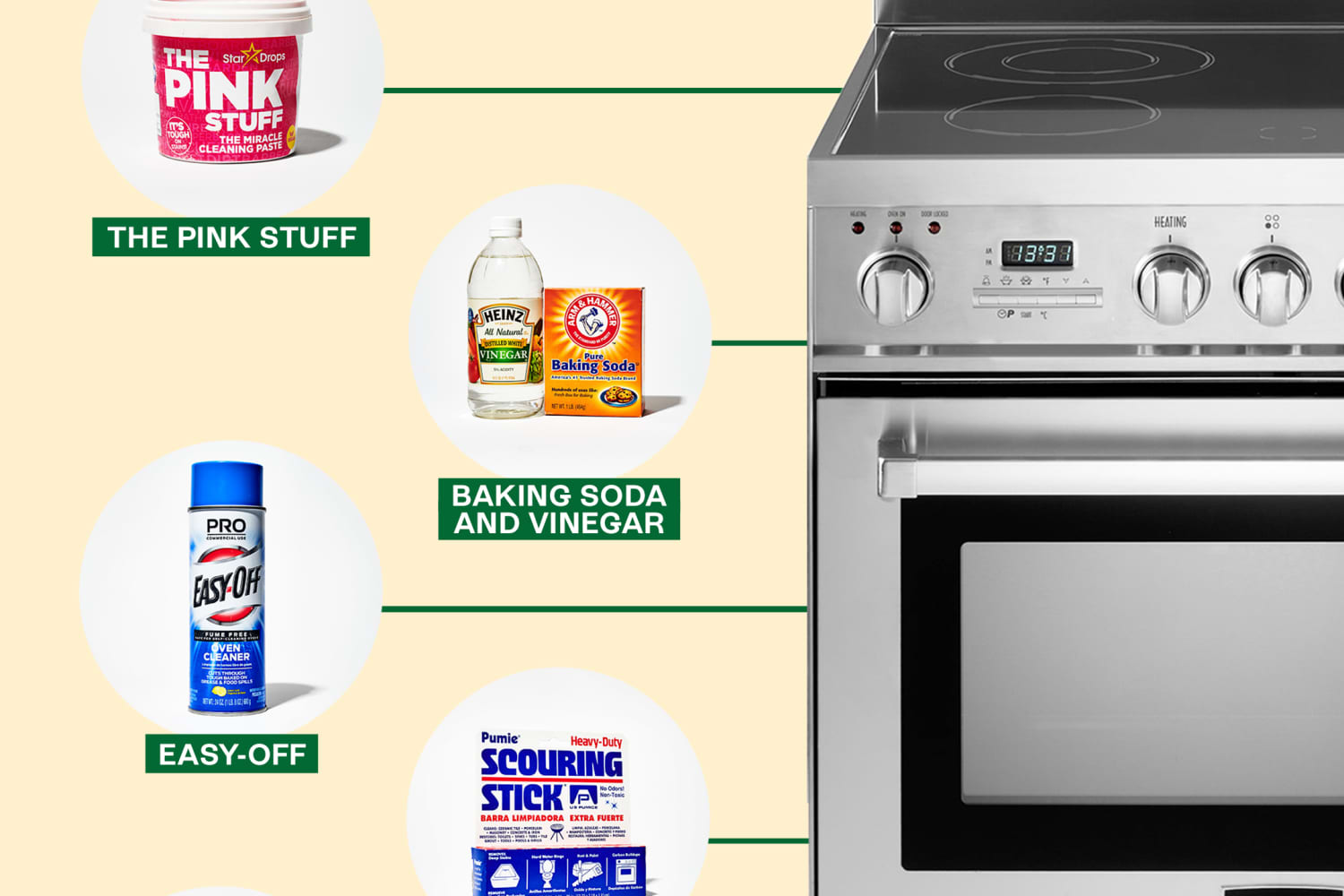
Maintaining a clean and safe oven for cooking is essential to ensure delicious meals and a healthy kitchen environment. With these simple tips, you can easily keep your oven in top shape. Regularly wiping down the interior and exterior with a mild cleaning solution will remove any residue or grease buildup. Remember to also clean the racks and oven door glass for a sparkling finish. Additionally, scheduling regular deep cleans and checking for any potential issues will help maintain a safe cooking environment. By implementing these easy steps, you can enjoy cooking without any worries and keep your oven in pristine condition.
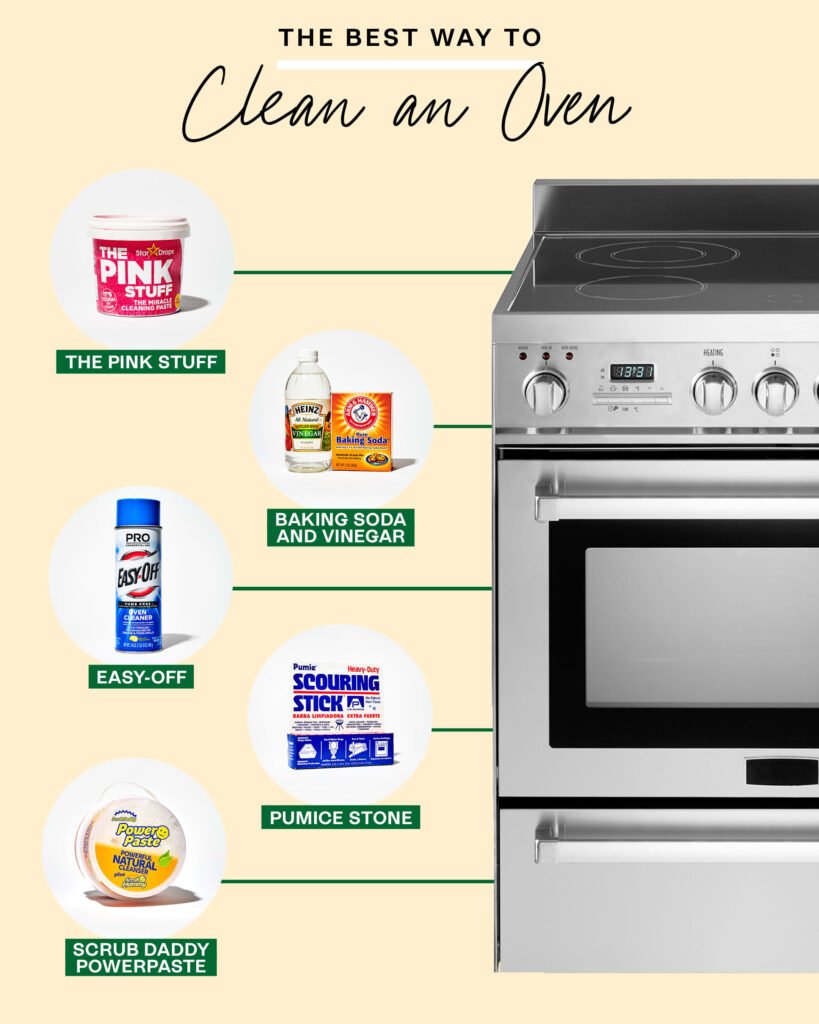
This image is property of cdn.apartmenttherapy.info.
Regular Cleaning
Cleaning the Oven Interior
Regularly cleaning the oven interior is essential for maintaining a clean and safe oven. Start by removing all the removable parts from the oven, such as racks and trays, and set them aside for separate cleaning. Use a damp cloth or sponge and a mild oven cleaner to wipe down the interior surfaces of the oven. Pay special attention to any stubborn stains or spills and gently scrub them away. Rinse the cloth or sponge frequently to avoid spreading dirt or grime around the oven.
Removing and Cleaning Oven Racks
Oven racks often accumulate grease and food debris, making them a breeding ground for bacteria. To remove this buildup, take out the racks from the oven and soak them in warm, soapy water for a few hours. Use a non-abrasive sponge or a soft brush to scrub away the residue. Rinse the racks thoroughly and dry them before placing them back into the oven.
Cleaning the Oven Door
The oven door is often overlooked when it comes to regular cleaning. However, it is important to keep it clean for both aesthetic and safety reasons. Start by gently wiping down the exterior surface of the door with a damp cloth. If there are any stubborn stains or spills, use a mild cleaner to remove them. For the interior surface of the door, refer to the manufacturer’s instructions as it may require disassembly for thorough cleaning. Make sure to dry the door properly before using the oven.
Cleaning the Oven Control Panel
The oven control panel is prone to collecting dust, grease, and food particles, which can hinder its functionality. To clean the control panel, start by turning off the oven and disconnecting it from the power source. Use a soft, damp cloth to wipe down the panel and remove any debris. Be careful not to use excessive moisture, as it can damage the control panel. Once clean, allow the panel to dry completely before reconnecting the oven.
Preventing Food Spills
Using Oven-Safe Containers
One of the best ways to prevent food spills in the oven is to use oven-safe containers. These containers are designed to withstand high temperatures and are less likely to leak or spill. When choosing oven-safe containers, look for those made of materials like glass, ceramic, or stainless steel. Avoid using containers with loose lids or those made of plastic, as they may warp or melt in the oven.
Covering Food while Cooking
Covering food while cooking can help prevent spills and splatters inside the oven. Use oven-safe lids or aluminum foil to cover dishes before placing them in the oven. This not only prevents food from splattering onto the oven walls but also helps retain moisture and promotes even cooking. Remember to adjust cooking times and temperatures accordingly when covering food.
Using a Drip Pan or Oven Liner
Another effective way to prevent food spills is by using a drip pan or oven liner. These accessories are placed at the bottom of the oven to catch any drips or spills, preventing them from sticking to the oven floor. Drip pans and oven liners are usually made of heat-resistant materials and can be easily removed and cleaned. They are especially useful when cooking dishes that are prone to bubbling or spilling over.
Managing Grease Buildup
Wiping Down the Oven Walls
Grease can accumulate on the oven walls over time, which not only affects the oven’s cleanliness but can also lead to unpleasant odors and smoking during cooking. Regularly wipe down the oven walls with a damp cloth or sponge to remove any grease or residue. For stubborn grease, use a mild degreaser or a mixture of dish soap and warm water. Avoid using harsh chemicals or abrasive scrubbers, as they can damage the oven’s surfaces.
Cleaning the Oven Vent
The oven vent is responsible for allowing hot air and steam to escape during cooking. However, it can also become clogged with grease and debris, hindering proper airflow and ventilation. To clean the oven vent, first, make sure the oven is turned off and cool. Remove any visible debris with a cloth or small brush, being careful not to push the debris further into the vent. Use a vacuum cleaner with a narrow nozzle attachment to gently remove any remaining dirt or debris.
Cleaning Grease Filters
If your oven has grease filters, it is important to clean them regularly to ensure proper ventilation. Grease filters are typically located beneath the oven hood or above the oven door, and they help trap grease particles from the air circulating within the oven. Depending on the type of filter, it can be easily removed and cleaned with warm, soapy water or in a dishwasher. Be sure to dry the filters thoroughly before reinstalling them in the oven.
Dealing with Burnt-on Residue
Using Baking Soda and Vinegar
Burnt-on residue can be a tough challenge to tackle, but with the right cleaning agents, it can be successfully removed. One effective method is to use a mixture of baking soda and vinegar. Start by sprinkling a generous amount of baking soda over the burnt-on residue, then spray vinegar onto the baking soda until it fizzes. Let the mixture sit for a few minutes to loosen the residue, then use a non-abrasive sponge or cloth to scrub away the burnt-on residue. Rinse the area with clean water and dry it thoroughly.
Using Commercial Oven Cleaners
Commercial oven cleaners are specifically formulated to tackle stubborn residue and grease buildup in ovens. Follow the manufacturer’s instructions for the specific oven cleaner you choose, as different products may have different application methods. Generally, you will need to apply the cleaner to the affected areas, let it sit for a designated amount of time, and then wipe or scrub away the residue. Be sure to wear gloves and work in a well-ventilated area when using commercial oven cleaners.
Scrubbing with a Non-abrasive Sponge
For less severe burnt-on residue, a non-abrasive sponge can be effective in removing the buildup. Wet the sponge with warm, soapy water and gently scrub the affected areas. Avoid using abrasive scrubbers or brushes, as they can scratch the oven’s surfaces. If needed, apply a small amount of baking soda or a mild abrasive cleaner to assist in removing the residue. Rinse the area thoroughly and dry it properly.
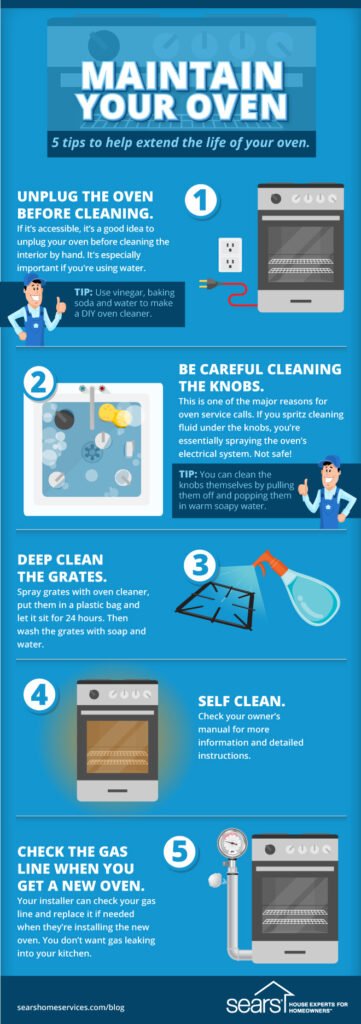
This image is property of assets.searshomeservices.com.
Maintaining a Safe Oven
Inspecting the Oven for Damage
Regularly inspecting your oven for any signs of damage is crucial for maintaining a safe cooking environment. Check the oven’s exterior and interior for any cracks, dents, or loose parts. Ensure that the oven door seals tightly and examine the gaskets for any wear or tear. If you notice any issues or suspect a malfunction, contact a professional technician for inspection and repair.
Checking Gas Connections
If your oven operates on gas, it is important to regularly check the gas connections for any leaks or damage. Inspect the gas line, valve, and fittings for signs of wear or corrosion. You can perform a simple test by applying a mixture of soap and water to the connections and observing if any bubbles appear, indicating a leak. If you detect a gas leak or suspect a problem with the gas connections, immediately turn off the gas supply to the oven and contact a professional for assistance.
Replacing Worn-out Seals
The oven door seals are responsible for creating a tight seal between the oven door and the oven cavity, preventing heat and steam from escaping. Over time, these seals may become worn or damaged, compromising the oven’s efficiency and safety. Inspect the door seals regularly for any signs of wear, such as cracks, tears, or looseness. If you notice any damage, promptly replace the seals with new ones specifically designed for your oven make and model.
Cleaning Oven Accessories
Cleaning the Oven Light
The oven light plays a vital role in allowing you to monitor your cooking progress. However, it can accumulate grease and dirt, gradually diminishing its brightness. Before cleaning the oven light, ensure that the oven is turned off and cool. Gently remove the light cover or bulb and wash it with warm, soapy water. If the cover is not removable, use a damp cloth or sponge to wipe it clean. Once dry, reattach the light cover or bulb securely.
Washing Oven Mitts and Gloves
Oven mitts and gloves are essential accessories for protecting your hands while handling hot dishes and baking trays. To keep them clean and hygienic, wash them regularly according to the manufacturer’s instructions. Most oven mitts and gloves can be hand-washed or machine-washed with mild detergent. After washing, allow them to air dry completely before using them again.
Cleaning Oven Thermometers
Oven thermometers are useful tools for ensuring accurate and consistent temperature readings while cooking. Over time, these thermometers can become grimy or coated with food residue, affecting their accuracy. To clean an oven thermometer, gently wipe it with a damp cloth or sponge. If necessary, use a mild cleaner to remove stubborn residue. Avoid submerging the thermometer in water, as it may damage the internal mechanisms. Dry the thermometer thoroughly before using it.
This image is property of cdn.apartmenttherapy.info.
Removing Lingering Odors
Using Lemon or Citrus
Lingering odors in the oven can be unpleasant and impact the taste of your food. One natural and effective way to eliminate these odors is by using lemon or citrus. Cut a lemon or citrus fruit in half and squeeze the juice onto a baking dish. Place the dish in the oven and heat it at a low temperature for about 30 minutes. The acidic properties of the lemon or citrus will help neutralize and eliminate the odors, leaving your oven smelling fresh.
Baking with Vanilla Extract
Another way to remove lingering odors is by baking with vanilla extract. Simply pour a small amount of vanilla extract into an oven-safe dish or ramekin and place it in the oven while it is not in use. Heat the oven to a low temperature for a short period, and the sweet aroma of the vanilla will help mask and eliminate any unpleasant odors.
Leaving a Dish of Baking Soda in the Oven
Baking soda is well-known for its odor-absorbing properties. To remove lingering odors in the oven, leave a dish of baking soda inside overnight. The baking soda will naturally absorb the odors, leaving your oven smelling fresh and clean. Remember to remove the dish of baking soda before preheating the oven for cooking.
Avoiding Harsh Cleaning Methods
Avoiding Abrasive Cleaners
When cleaning your oven, it is important to avoid using abrasive cleaners, as they can scratch or damage the oven’s surfaces. Harsh chemicals and abrasive scrubbers can compromise the protective coatings on oven walls and racks, leading to corrosion or discoloration. Stick to mild cleansers, such as baking soda, vinegar, or commercially available oven cleaners specifically designed for your oven.
Not Using Self-cleaning Mode too Frequently
Many ovens are equipped with a self-cleaning mode, which uses high heat to burn off food residue and grease. While this feature can be convenient, it is recommended not to rely on the self-cleaning mode too frequently. The high heat generated during the self-cleaning process can sometimes cause damage to the oven’s internal components and potentially lead to malfunctions. Instead, regular manual cleaning combined with occasional use of the self-cleaning mode is the best approach to maintaining a clean and safe oven.
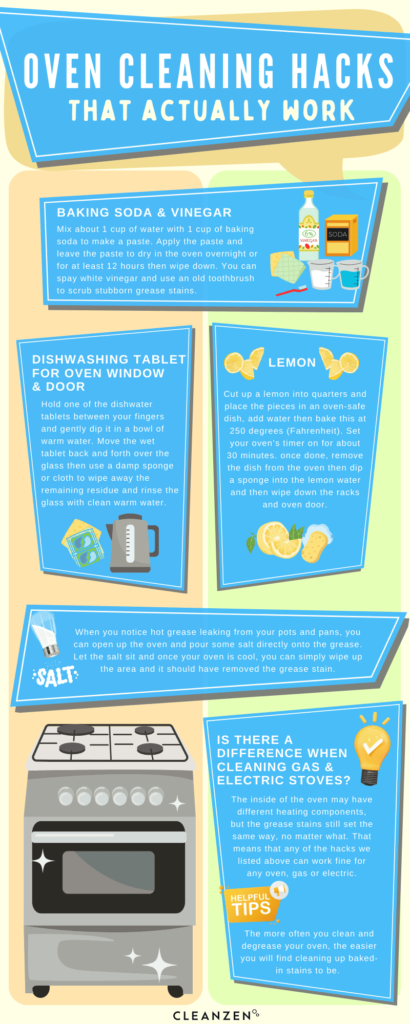
This image is property of cdn.shortpixel.ai.
Regular Maintenance
Checking and Replacing Oven Bulbs
The oven bulb is a small but important component that provides visibility inside the oven. Regularly check the condition of the bulb to ensure it is functioning properly. If the bulb is not illuminating, it may need to be replaced. Consult your oven’s manual for instructions on how to safely replace the bulb or seek assistance from a professional technician.
Inspecting and Cleaning Oven Gaskets
Oven gaskets are responsible for creating a secure seal between the oven door and the oven cavity. Over time, these gaskets may become dirty or worn out, compromising the oven’s energy efficiency and safety. Inspect the gaskets regularly for any signs of wear or buildup. Clean the gaskets with a damp cloth or sponge and mild detergent to remove any dirt or residue. If the gaskets are damaged or no longer form a tight seal, they should be replaced to maintain the oven’s safety and performance.
Calibrating Oven Temperature
The accuracy of your oven’s temperature is crucial for achieving optimal cooking results. Over time, oven thermostats may become slightly off-calibration, resulting in uneven or incorrect cooking temperatures. Fortunately, most ovens allow you to manually calibrate the temperature settings. Refer to your oven’s manual for instructions on calibrating the oven temperature or consult a professional technician for assistance.
Seeking Professional Help
Consulting the Manufacturer’s Guide
If you encounter any issues or have specific concerns about maintaining your oven, it is always best to consult the manufacturer’s guide. The guide provides valuable information about your oven’s specific features, cleaning instructions, and maintenance recommendations. By following the manufacturer’s instructions, you can ensure that you are properly maintaining your oven and maximizing its lifespan.
Hiring a Professional Oven Cleaner
For deep cleaning or if you are unsure about handling certain maintenance tasks, it is advisable to hire a professional oven cleaner. Professional oven cleaners have the expertise and specialized tools to thoroughly clean and maintain your oven. They can handle tasks such as removing stubborn stains, deep-cleaning hard-to-reach areas, and inspecting and repairing any potential issues. Hiring a professional ensures your oven receives the care it needs and provides peace of mind knowing that it is maintained in a safe and efficient condition.
In conclusion, maintaining a clean and safe oven is essential for enjoyable cooking experiences and ensuring the longevity of your appliance. By following these tips and regularly cleaning and maintaining your oven, you can create a hygienic and efficient cooking environment, free from lingering odors, grease buildup, and safety hazards. Remember to consult your oven’s manual for specific cleaning instructions and seek professional help when needed. With proper care and maintenance, your oven will continue to serve you well for years to come.
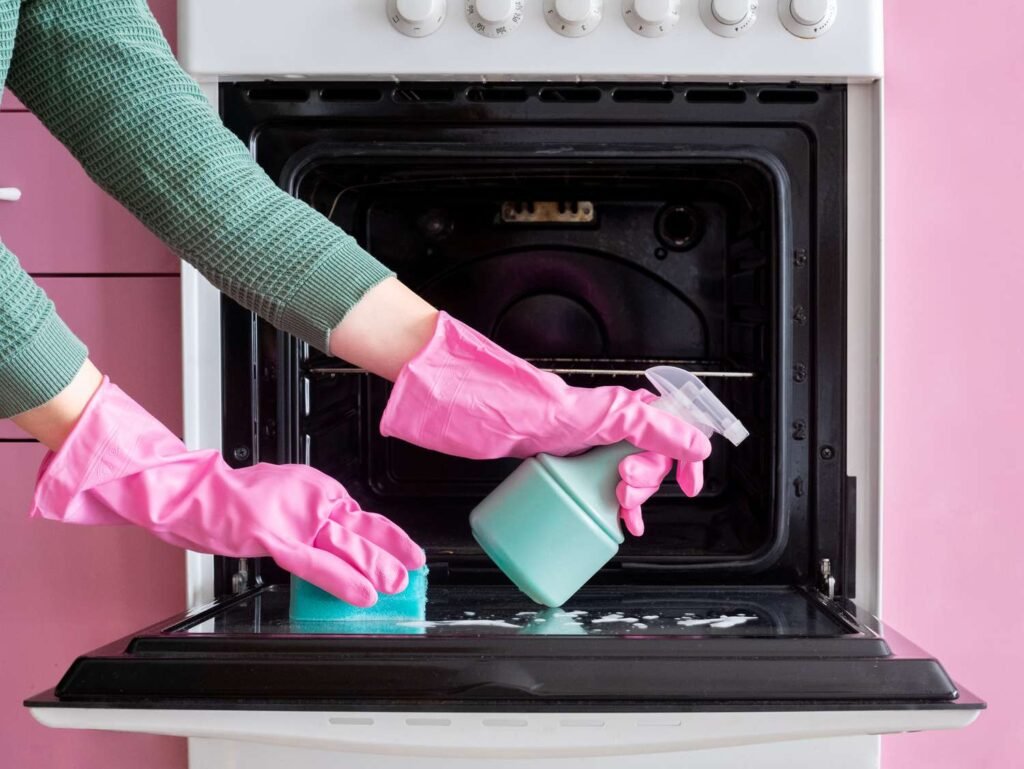
This image is property of www.realsimple.com.

